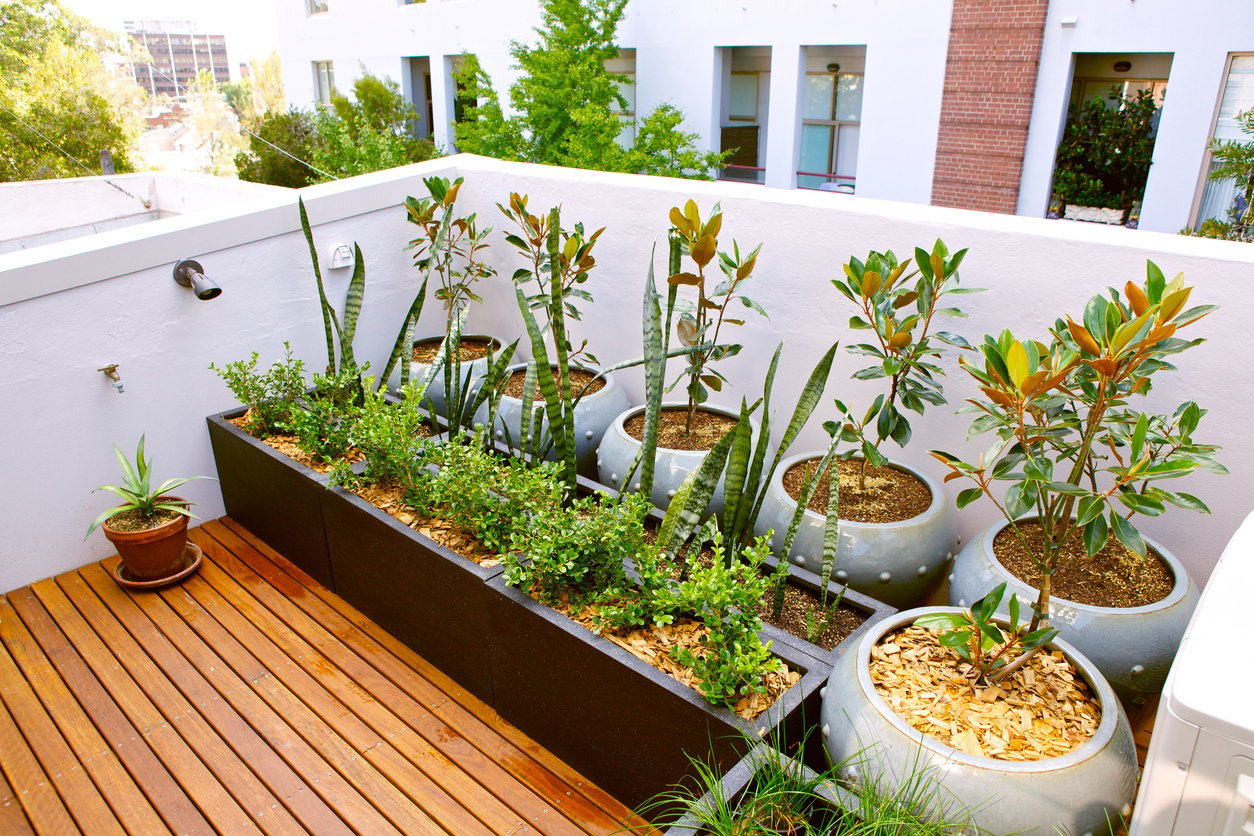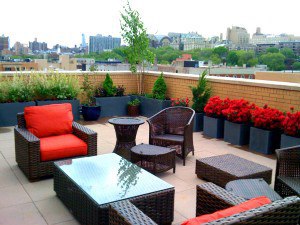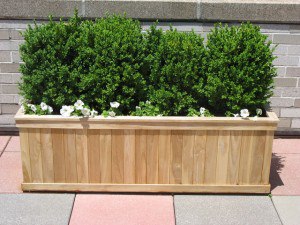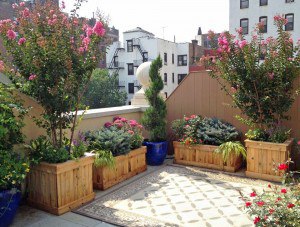Rooftop Gardening Tips
By: EYA Homes on May 9th, 2013
Entertaining friends and family on your EYA rooftop terrace is a wonderful way to spend your Spring and Summer nights, why not make the most of your space by adding a beautiful garden?!
Goodhousekeeping's The Daily Green writes that, “Urban plantings help purify the air of toxins, produce oxygen, decrease harmful stormwater runoff, reduce the "heat island effect" and provide some food and habitat for wildlife. We can also grow some of our own fresh produce, keep bees, and increase property values.”
Who wouldn't want that? Just in time for Spring, our EYA Experts have compiled some tips for utilizing your beautiful rooftop terrace as your own personal urban garden!
Start with the foundation - the flower pots!
Consider the weight of your pots. No one wants to lug a heavy, bulky container up a few flights, right? Keep it light weight, for your sake and for the roof’s sake. Terra-cotta and cement pots can be heavy, especially with wet soil inside. This can put extra pressure on your rooftop terrace. An easy solution is to use a lightweight variety, such as fiberglass, aluminum or even wood. Plastic styles may be cheaper and lighter, but they will deteriorate over time in the UV sunlight.
- Fiberglass pots are a great choice if you like the look of carved pottery and modern streamlined designs, but choose the color wisely; light-colored planters can lessen heat absorption during the hotter months, which will keep the soil moist and help the plant’s roots grow evenly.
- Aluminum or metal designs are contemporary and won’t crack during the winter months, but be warned, these pots get very hot in direct sunlight, and plants may need to be watered more frequently.
- Hardwood styles are designed to last, but they are also very susceptible to rot, so choose a relatively rot resistant Redwood or Cedar, and keep the wood elevated off the ground to avoid speeding up the rotting process.
Get creative when choosing the style and size. Choose containers or pots that flatter the design of your rooftop terrace. They come in all shapes, sizes, and colors. When choosing the size, consider using a pot or container that is larger, versus a smaller one. Large pots retain more moisture than small pots, thus reducing the watering from twice daily to once daily. It seems like common sense, but make sure your pots have drainage holes - if someone is not able to water the plants every day, use pots or containers with a drip tray to ensure drainage holes soak up water as needed. HGTV suggests placing rocks on the bottom of your containers or pots to ensure proper drainage. Or, if weight is an issue, use Styrofoam packing peanuts. Genius!
Now that you have the pots, shop for your garden!
Start with potting soil. Shop for varieties of “soil-less” potting mixes, not garden soil. (Yes, there is a difference!) Soil-less potting mixtures are less dense and don’t compact as much as your average top soil or garden soil, so it makes it easier to work with in planters. Also, even when wet, it is much lighter than wet garden soil, again, reducing the pressure on your roof. You can buy these pre-mixed varieties from local garden centers, such as Ginko Gardens in Southeast DC, Eclectic Nature in Alexandria, VA and Merrifield Garden Center in Merrifield, VA.
Consider the weather conditions. Wind and drought tolerant plants are important for a rooftop garden. Tough, shrubby grasses are very heat and sunlight tolerant, and can be used to give year round interest and shelter less-hardy plants from the wind. Also, select small-leaved plant varieties, as larger leaves shred easily in the wind. Examples of hardy plants for your rooftop are some Evergreen shrubs (e.g. Junipers or dwarf Spruces), Phormium, and Blue Fescue.
Play up contrasting textures. Make your garden flow by mixing varieties of ornamental grasses, evergreens, and colorful annuals. When thinking about color, Thomas Lewis of Floral Studio - NY suggests keeping your colors cohesive. Lewis states “limiting your palette makes your space appear larger.” Also, stray away from too many ideas. To keep a more organized feel to your terrace, New York City rooftop garden designer Amber Freda says to “Pick two or three planter styles and two or three colors and repeat them throughout the space. Any more than this and you could end up with a rooftop garden that doesn't look very organized.” You can use one of our favorite resources, Gardening Knowhow, to read up on the best full-sun plants for Spring.
For even more tips on planning your rooftop terrace design, check out our previous blog entry here.
Planning your vision is the hardest part, and once you've done that, just purchase, pot, and watch your garden grow! Happy rooftop gardening!
EYA wants YOU to share your rooftop terrace gardens with us, tweet us your pics @EYAHomes or post them on our Facebook wall!





